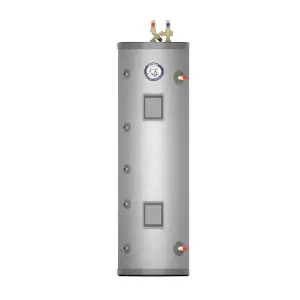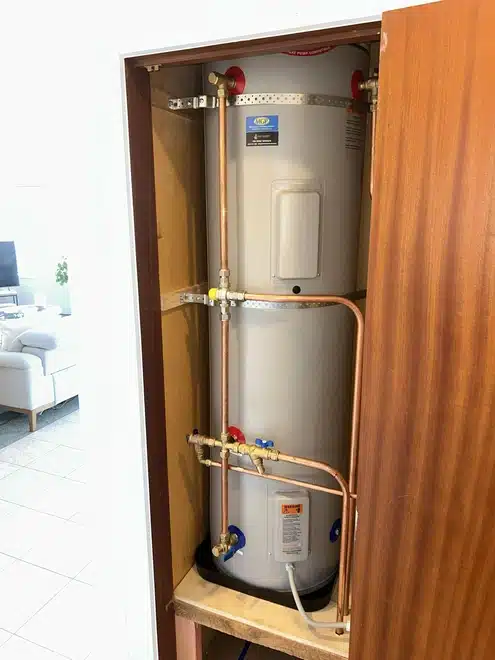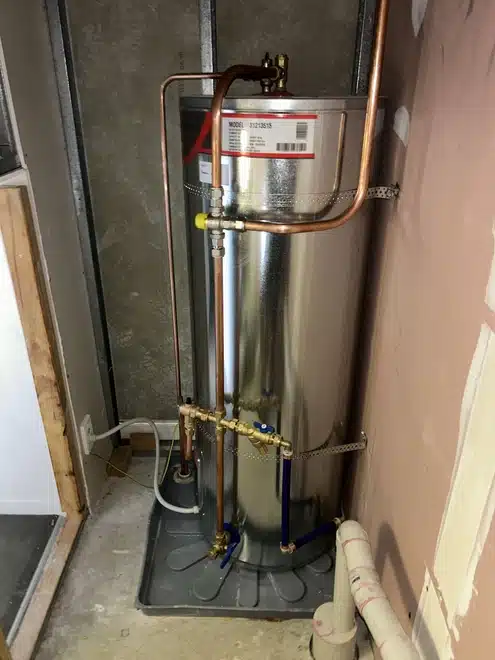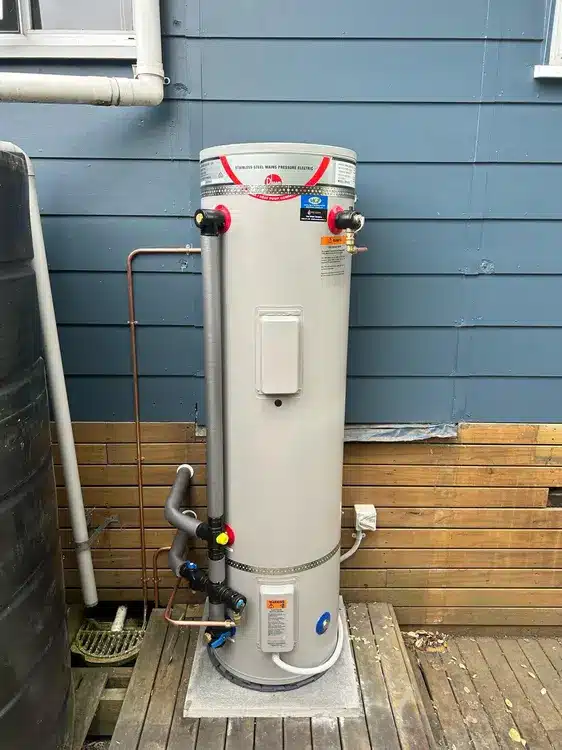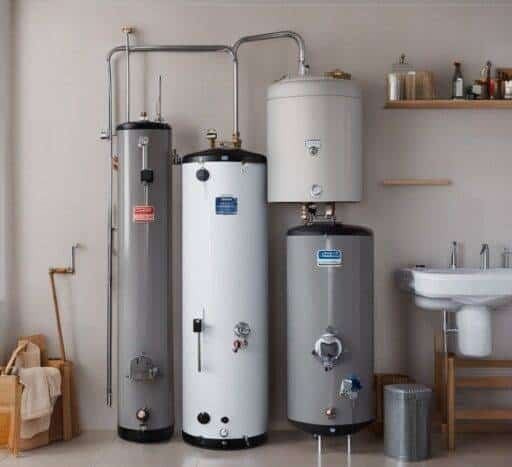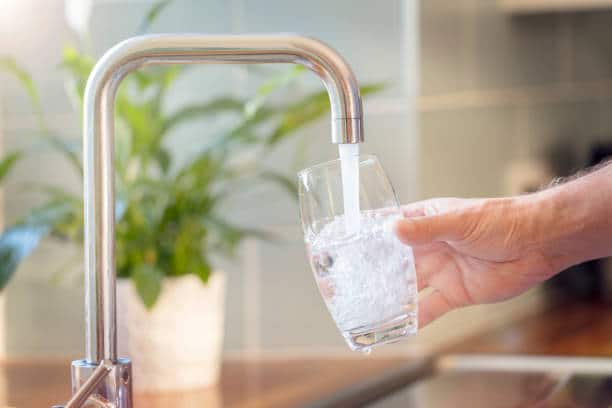What is a Hot Water Cylinder?
A hot water cylinder, also sometimes called a boiler, calorifier tank, or geyser, is a tall, cylindrical tank usually made of copper, stainless steel, or enamel-lined steel. It has an insulated exterior to minimise heat loss and one or two inlets near the bottom to allow cold water to flow in as hot water is drawn out for use in the home.
Inside the tank is one or two heating elements. In an electric hot water cylinder, this is an electric heating element much like what you would find in an electric kettle. In a gas cylinder, it is a gas burner. Solar hot water systems use a solar collector panel to heat a fluid that circulates through a coil inside the tank.
The hottest water naturally rises to the top while cooler water stays near the bottom. A sensor near the top of the cylinder detects when the water reaches a set temperature, triggering the heating element or gas burner to turn off until more heating is needed.
How Does a Hot Water Cylinder Heat Water?
Electric Hot Water Cylinders
The most common type of residential hot water cylinder uses two electric heating elements to heat the water. One element, usually located near the bottom, heats the water during off-peak electricity hours when power is cheaper.
The second element, located higher up on the cylinder, only activates when water use demands are high, like mornings when several showers and sinks may be running at once. Using both elements during peak times ensures a steady stream of hot water to all taps.
Gas Hot Water Cylinders
Natural gas or LPG systems use a gas burner at the base of the cylinder to heat the water instead of electric elements. They work similarly otherwise, circulating water from bottom to top while the gas burner goes on and off to regulate temperature based on the thermostat setting.
The gas burner and a flue pipe to vent exhaust make gas systems a bit bulkier, but they heat up water faster than electric cylinders. They are more complex to install however, requiring special gas pipes and exterior venting.
Solar Hot Water Cylinders
Solar hot water takes advantage of renewable energy from sunlight by circulating fluid through panels on your roof. As the sun’s rays heat the solar collector panels, the fluid warms up. It flows back into the insulated storage tank, transferring its heat to the water inside.
Solar hot water cylinders have electric or gas burner elements as a backup for cloudy days. But a properly sized solar system can provide most or even all of a household’s hot water needs on sunny days.
How Hot Water Cylinders Link to Your Household Plumbing
Hot and cold water pipes connect to the hot water cylinder to allow water to flow both in and out. Here is the basic flow:
Cold water supply pipe connects near the base of the cylinder. The mains pressure from your household plumbing forces cold water into the bottom of the tank as hot water gets used.
Hot water outlet pipe connects near the top so that the hottest water can flow out to taps and showers via gravity.
Control valves and sensors determine when water has reached the optimum temperature. They signal the gas burner or electric heating elements to turn on or off accordingly.
Temperature and pressure relief valve provides a safety release if overheating or overpressure occurs. This valve releases excess hot water outside to prevent explosion risk.
Drain valve at bottom allows full cylinder drainage for maintenance.
Advantages of Hot Water Cylinders
Here are some of the benefits that hot water cylinders provide for domestic hot water:
Store large volumes of hot water so supply is not dependent on heater heating rate. Provide consistent hot water even for simultaneous, heavy use across the home.
Well insulated to reduce standby heat losses. Only heat water as needed instead of on demand.
Separate hot water production from end use so tapping hot water does not impact temperature.
Simple, proven technology that lasts for decades with basic maintenance. Readily available replacement parts.
Use off-peak power rates for cheaper electric water heating with dual element systems.
Compatible with renewable solar thermal systems to reduce energy costs.
Hot Water Cylinder Sizing and Location
Cylinder size depends on your household occupancy and simultaneous hot water demand. The larger the unit, the more hot water capacity you’ll have. But very large cylinders can suffer greater standby losses. Consult with hot water experts on properly sizing your cylinder.
Most cylinders install in home laundry rooms, garages, or utility rooms since they do take up considerable space. Place near bathrooms to minimise piping distances. You’ll also need to consider cylinder maintenance access as well as accommodating pipes fuel lines, and electrical connections.
For new installations, smaller, high efficiency units can install in cupboards to conserve space. Just be sure ventilation and access are addressed in case maintenance is later needed.
Final Words
Use our contact us page to reach us and we will be more than happy to discuss your hot water situation. Or give us a call on 0800 497658.
At Hot Water Solutions all we do is hot water!

